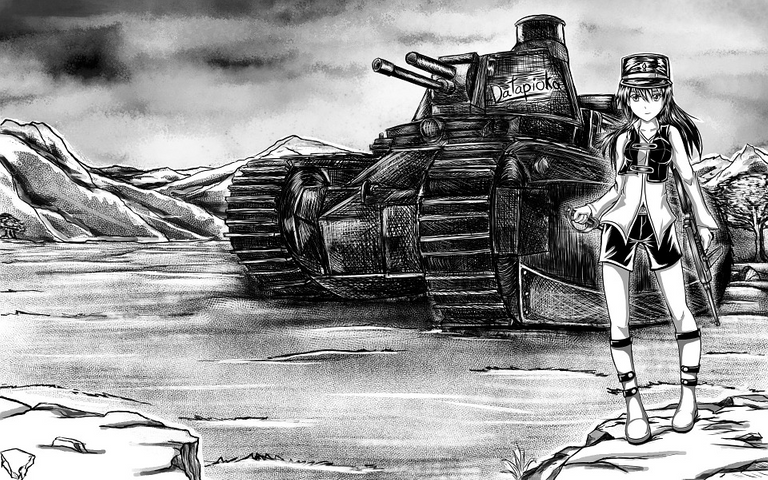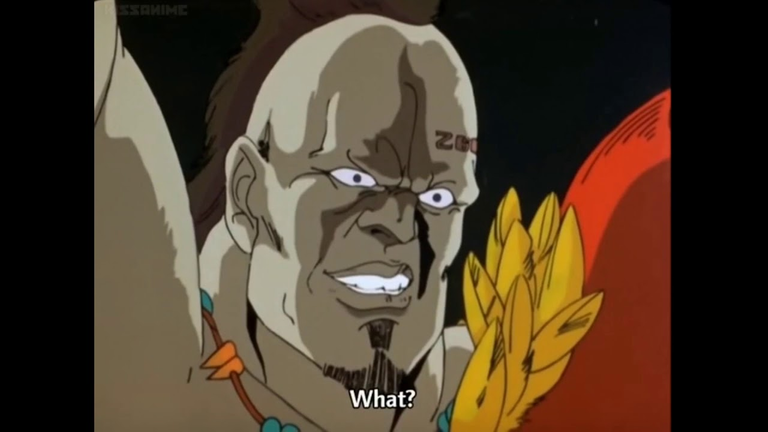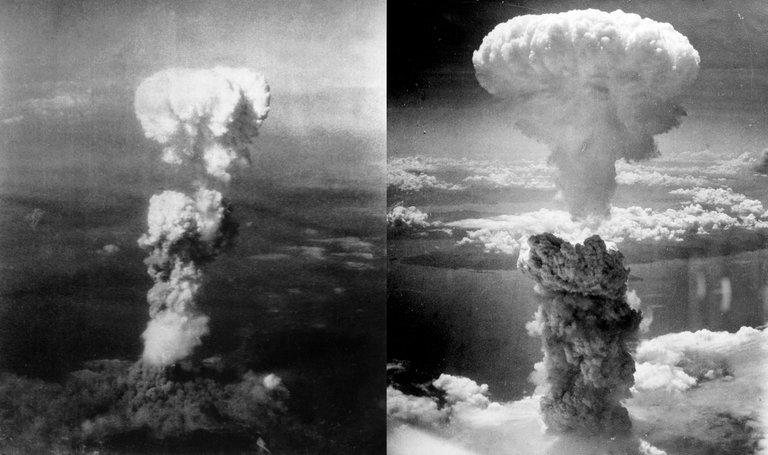
Image Source: PixBay
If I was to ask you to describe Japan with a few words, what would you say? Some might say a great developed country, some will say a country filled with kind people, technological advances, a big name in the entertainment world. If you are a gamer of any sort, there's an over 50% chance of you owning a Japanese console (Playstation, Nintendo, etc...). A country loved by most, and if not loved respected.
But what if I told you that less than 80 years ago, people had mostly negative feelings toward Japan? Your first thought might obviously be
But, it is true. Japan wasn't always this kind, cool, and cute you think it is. Japan was seen differently up until two nuclear bombs were dropped on Hiroshima and Nagasaki
Japan was seen as an evil country, specifically during the period it was ruled by Emperor Shōwa or as he is more known in English by his name Hirohito, a period between 1929 until 1945, Japan can be described as much worse than Hitler's Nazi period. Yes, you read that correctly. So much so, that they were nicknamed the "East's Nazis". The countries Japan invaded and took over were twice the size that Nazi Germany took over.
We are not even about small, weak countries either. China, Malaysia, Singapore, Thailand, both Koreas, Hong Kong, and Vietnam are the kind of countries Japan took over. Directly and indirectly, during that period Japan was responsible for the death, and I hope you are sitting for this, 15 million people. Between human massacres committed, starvation caused, and lethal scientific experiments were done on thousands of people. A simple google search for "Unit 731", an army-related scientific unit, would show horrifying results that lead to the deaths of up to 400 thousand people.
Many examples will come to mind when it comes to the cruelty of Japan during that period. Biochemical engineered insects injected with the plague getting dropped on civilians or the death of 200,000 unarmed Chinese people who weren't resisting the Japanese army during the second Japanese-Chinese war. Murders, rapes, annihilation, you name it, Japan did it. So much so, that one of the most humane people during that period, John Rabe, a person who saved over 150,000 Chinese people, was an actual Nazi living in China. When the good guy in your story is a Nazi, you know how evil you are.
All of that is merely an intro to today's subject. Today we will discuss how Japan went from such an evil empire, an empire that lead to many Asian countries having zero knowledge of the Nazis and even using their symbols at school parties, but having an unforgettable mark of Japan's cruelty.
How Did Japan Become the Country We Know Today?
Well, first of all, a new generation that didn't witness their actions needed to come to life. That generation needed to hear a different side from Japan, no longer did that generation need to hear about Japan's military superiority that once was, nor the economical rise that took Japan to third place worldwide by the end of Hirohito's empire of Japan until it became Japan the country as we know it today.
Japan needed to win over people using soft power, the power of cultural and educational elements. The kind of power that speaks to the people rather than government, the political term for which is "Public Diplomacy". Such movement needed to be adopted by governmental institutions, Japan Foundation, started in 1972, is a prime example.
The role of such a foundation is spreading Japanese art, language, and culture, and showing it to the world in its brightest colors. Spreading those through means such as animation, or anime, I know that some people might get offended when I use animation to describe the type of cartoons they watch, sorry, just wanted to offend them again. Also, Manga, those two means speak to people of all ages, filled with depth, drama, violence, and philosophy, the likes of which were never shown before through this type of medium.
Those types of arts were financed and encouraged by the Japanese government. And during that time period, the term "Kawaii" came to light, the cute of all cuteness. Kawaii, showing a cute person, in a cute environment, wearing cute clothes and accessories, and talking cutely. Kawaii was expressed as means for students to rebel against the patriarchy. All of that was helped by the economic prosperity in Japan at the time.
Kawaii had its own sub-genres, such as Burikko, where women in their 20s or 30s behave innocent and child-like and speak in the third person. The spread of Kawaii and Burikko isn't surprising for adults as they go through the hardships of life and long to return to childhood days, therefore, these things were relatable making the marketing for the Kawaii and Burikko style, anime, manga, TV shows, and movies easy and attractive.
In the mid-seventies, Japanese products started spreading like wildfire. For example; anime and manga were mostly Japanese, Nintendo and Gameboy were Japanese products in 1988, and we are all aware of Sega, created in 1986. Continuing all the way to current times, PlayStation and Wii are Japanese, characters like Mario and Sonic are Japanese. Streetfighter, even Pac man is a Japanese creation.
In the Arab world and during the 80s and 90s, what children knew as Alice's Adventure in Wonderland was the Japanese version. The way many generations knew Alice was the Japanese version and not the Disney one. Let's not forget about the franchise of Hello Kitty. Also, ask any child in the Arab world today if the name "Grendizer", an anime created in the mid-70s, means anything to them. Most would answer yes. Also Captain Tsubasa, or as he is known in the Arab world "Majid". Countless media characters all go back to Japan. So much so, that you probably forgot about the cruelty of Japan that you read a few minutes ago.
We could keep going as years went by, and each period would have a notable Japanese show on the air worldwide, watched by millions if not billions of people. Pokemon went on to even feature on the cover of Times magazine.
Through all these mediums an idea about Japan was instilled in us, people who are smart, advanced, and disciplined yet kind and proud of their heritage.
Other means than media, Japan had what is known as "grant aids", executed in over 30 countries in the form of projects. In Egypt for example, 150 projects commenced until 2004, costing 1 billion and 200 million dollars in total, including the landmark that is the Cairo Opera House. Some parts of Egypt's metro system, a children's hospital, and Egyptians will always remember the ambulances that were present from the Japanese government in the early 2000s.
Obstacle on the road.
Japan was on its way to spreading its culture and positive image even more if it wasn't for The Asian financial crisis that gripped much of East Asia and Southeast Asia beginning in July 1997. Japan's economy took a big hit.
In 2002, American journalist Douglas McGray wrote an article in Foreign Policy about how much Japan reserve of "cute" Japan has in what he referred to as "Japan's Gross National Cool". Suggesting that should they manage it with simple tools they could create a revolution in production and exportation.
What seemed like a simple article written by an American in a magazine that isn't really known became a talking and discussion point among the Japanese government officials. The term "National Cool" became a term spread among different departments in the government coining the term "Cool Japan" caused a trend that is official in nature in the shape of conferences, exhibitions, and festivals for stuff like Anime and Manga.
Following that, we came to face events such as International Manga Award, Tokyo Anime Festival, and World Cosplay Summit creating an outlet for those attached to anime characters and seeking to behave like them a space to gather and express their interests. Places that are visited from all around the world. Also, these events would be hosted in different countries around the world, also sponsored by the Japanese government. Making Japane officially "Cool".
In 2011, it started getting more serious and formal. Strategies were laid to benefit from "Cool Japan". After Kawaii Japan, we came across a spreading of culture through anime, manga, food, fashion, and creative technology through a complete business model called "Cool Japan" with the government playing a big part of it along with businesses from around the world. Taking it a step further with Cool Japan Fund, a fund created solely to support young people who could help spread the message of Cool Japan.
In Conclusion
Japan has taken a notable trip. In the totality of history, Japan is just another country, not evil, not good, just a country. Japan is a hard-working, smart country, one found through political projects a way to make you like it and like its products and culture. Selling you the idea of it being a cool or Kawaii country through anime, manga, TV shows, movies, grant aids, entertainment, gaming, and projects. Reminding you of how good Japan is every time you watch an anime, read manga, eat sushi, or in some cases while walking in the street and see one of their thousands of projects.
Their trip is also a reminder of marketing, branding, and rebranding as concepts can also apply to countries.
Check out the sources below for further readings.
'Nazi-chic': Why dressing up in Nazi uniforms isn't as controversial in Asia
China is not forgiving Japan on Nanjing massacre
Forgotten Holocaust of WW2
Horrible details for Nanking massacre
Causalities of Asians because of Japan invasions
Social imaginary
Pop culture diplomacy in Japan
Politics of nation branding
Ningbo biological attack
Unit 731
Japan government entities helped the rebranding
Japan Grant Aid
JICA
Oshin 65 countries
International Manga award
Tokyo Anime Award
Public Diplomacy
Japan Foundation
Japan External Trade Organization
More about Japan’s Soft Power
what is kawaii…
Douglas Mcgray Article
World cosplay summit


Well done, now I know much more about Japan than I ever did. Before reading this all I knew was about Japn's invasions and eventually the two bombs. I always wondered how such a small country was so aggressive towards its neigbors.
Thanks for sharing, I certainly would not have gone looking for a history of Japan.
I love their culture, and I loved it when I visited Tokyo. I hope I'll visit other cities too! Nice article !PIZZA
PIZZA Holders sent $PIZZA tips in this post's comments:
(9/10) @casimirio tipped @amirtheawesome1 (x1)
You can now send $PIZZA tips in Discord via tip.cc!
Thank you for sharing all this information about Japan on ListNerds, I learned a lot.
Your post has been curated by us! Received 20.00% upvote from @opb. Do consider delegate to us to help support our project.
Do join our discord channel to give us feedback, https://discord.gg/bwb2ENt
* This bot is upvoting based on the criteria : 1. Not plagiarised, 2. Persistent previous quality posts, 3. Active engagement with other usersDo upvote this commment if you 💚 our service :)